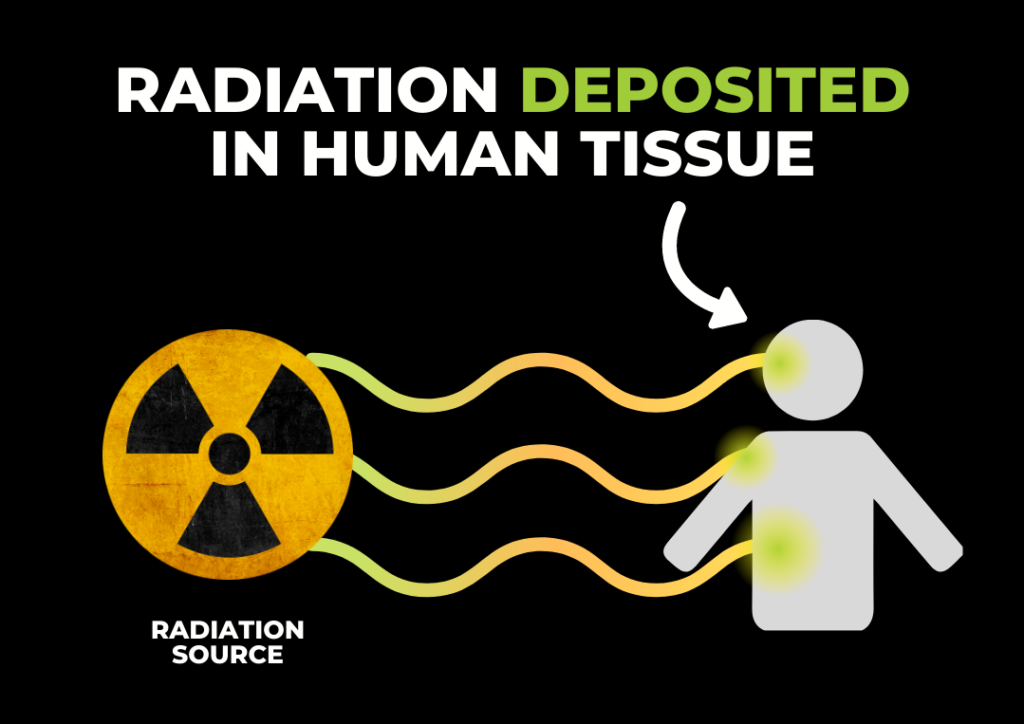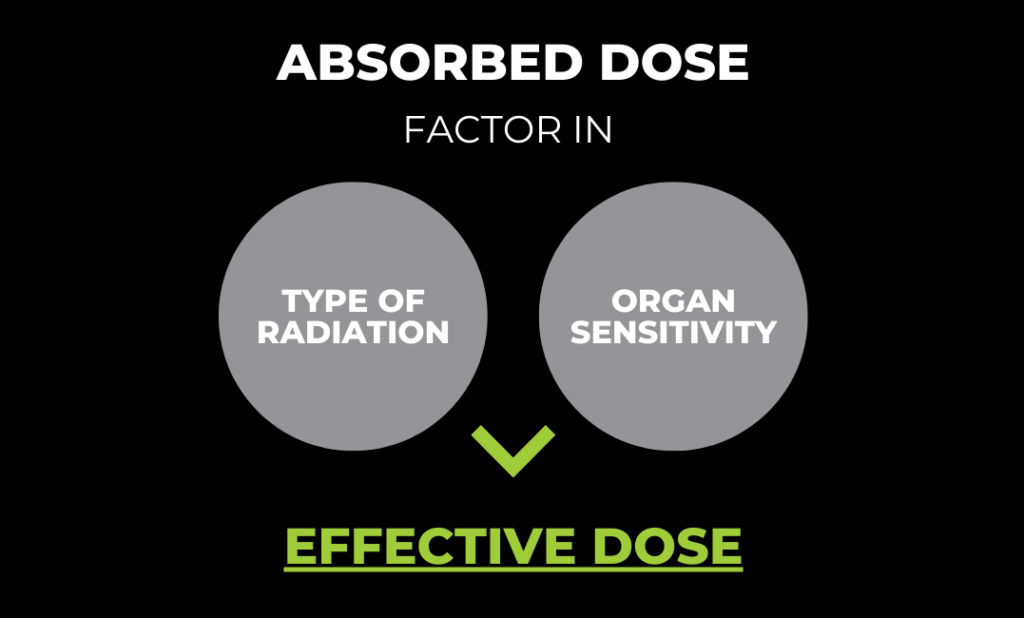We can group radiation into two types: ionising and non-ionising. Ionising radiation like X-rays has a shorter wavelength and higher frequency while non-ionising radiation like radio waves has a longer wavelength and lower frequency.
To measure radiation activity or the amount of radiation coming out of a source, Australians use the unit Becquerel (Bq) from the international system (SI) of units or the metric system. In the United States, on the other hand, radiation is measured in Curie (Ci).
Bq counts the number of particles or photons emitted per second and is usually measured using a Geiger counter. For example, you place a Geiger counter over a gram of radioactive substance and if you count 3 clicks per second, the radioactivity would be 3 Bq.

To measure radiation exposure or the effect of radiation on substances that absorb it, we use the units gray and sievert. We classify this into three types depending on the effects of different forms of radiation and the sensitivity of different body tissues.
Absorbed Dose
Absorbed Dose is a measurable, physical quantity. It’s the energy deposited in a kilogram of a substance. We measure it in gray (Gy), the SI equivalent of 100 rads which is equal to an absorbed dose of 1 Joule/kg.

For normal radiation protection levels, prefixes are used for the large unit:
- nanogray (nGy) – 1/1,000,000,000
- microgray (µGy) – 1/1,000,000
- milligray (mGy) – 1/1,000
Equivalent Dose
If the Absorbed Dose indicates the energy deposited, the Equivalent Dose indicates the expected biological damage from the Absorbed Dose. Even if two people absorb the same amount of Absorbed Dose, the Equivalent Dose could be different depending on the radiation type absorbed by an organ.
We measure this in sievert (Sv) which is calculated by multiplying the absorbed dose to the organ/tissue with the Radiation Weighting Factor (WR). The WR is unique to the type of radiation. For instance, alpha particles’ Radiation Weighting Factor is 20 while x-rays and gamma rays’ is 1.
Like gray, sievert uses prefixes for normal radiation protection levels:
- nanosievert (nSv) – 1/1,000,000,000
- microsievert (µSv) – 1/1,000,000
- millisievert (mSv) – 1/1,000
Effective Dose
If the Equivalent Dose takes note of the effect of a certain radiation type, the Effective Dose accounts for the harmful effects on a certain body part as some organs are more sensitive to radiation than others. For example, the head is less sensitive than the chest.

To calculate the Effective Dose, we multiply the Equivalent Dose by the Tissue Weighting Factor (WT).
| Tissue | Tissue Weighting Factor (WT) | Sum of Tissue Weighting Factors |
| Bone-marrow (red), colon, lung, stomach, breast, remaining tissues | 0.12 | 0.72 |
| Gonads | 0.08 | 0.08 |
| Bladder, oesophagus, liver, thyroid | 0.04 | 0.16 |
| Bone surface, brain, salivary glands, skin | 0.01 | 0.04 |
| Total | 1.00 |
Common Radiation Exposures
Aside from natural background radiation like cosmic radiation, we get exposed during medical procedures. Here are some examples of approximate effective radiation doses:
- Computed Tomography (CT) – Brain – 1.6 mSv
- Dental X-ray – 0.005 mSv
- Screening Digital Mammography – 0.21 mSv
Note that these values can vary depending on the size of the patient and the technology used. Imaging tech manufacturers continue to work on reducing radiation exposure while maintaining image quality.
Radiation Monitoring Services
For medical facilities or any organisation working with radiation, a real-time radiation monitoring system can provide clear visualisation of data to increase compliance with regulations. The SensaWeb solution automatically captures radiation measures continuously, requiring no input from end-users. If there are any exposures above a determined level, alerts will be sent immediately to the relevant staff member. Unless there is a critical issue we don’t expect there to be any change to processes during procedures. Being able to review the data afterward will provide a greater ability to change or adjust to limit future exposure.

Looking for area radiation monitors for your business operations? SensaWeb got you covered. With our monitors, you can easily detect and interdict radioactive materials. Connect with us here or through our email address: info@sensaweb.com.au. You can also call us at +61 415 409 467.